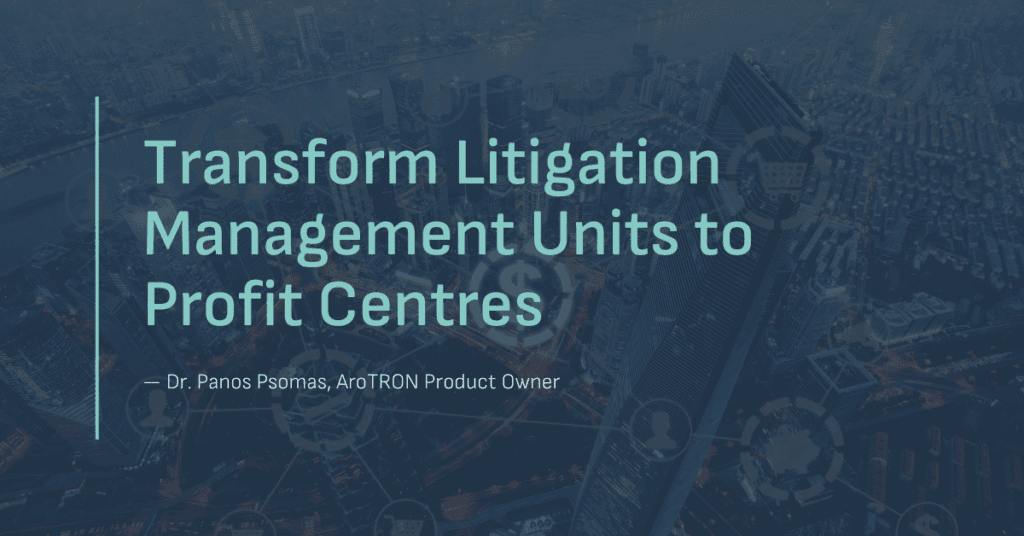
Non-performing loans did exist before the pandemic but the strong, growing economies kept the number of them reducing and lenders were happy with their credit risks. Covid-19 impact on the financial markets was fast and serious so the global economies were badly hit.
The counteractions to respond to the economic crisis started slowly and the resources were limited. Borrowing increased in all types of loans but also the number of non-performing loans started to increase. The borrowers started losing their revenues because of businesses closed in lockdowns and the funds to repay their loans were disappearing.
The world is today slowly recovering and economic growth is coming back. But can we ever return to “old normal”? Maybe we need to learn to live in “new normal”? Are the economies and especially credit markets now better prepared for any similar crisis in the future? Do we have the necessary IT solutions to assist in any crisis management?
John Papaevgeniou, Relational CEO shares his point of view about how the Covid-19 impacts to our economies and lives.
What was happening in the NPL market before the Covid-19 pandemic, and where do you see the market today?
NPL market was declining before the Covid-19 pandemic and was expected to slow down further. There wasn’t much activity in 2020 because of the lockdowns closing business in all areas, Italy and Greece as the exemptions staying busy.
2021 has started to show growth in the market for various reasons, and more new deals are expected by the end of 2021.

Source: NPL and non-core loan deals in Europe by year, Debtwire NPL Database
What would you think as reasons for the expected NPL market growth in 2021 and 2022?
The portfolio owners are preparing to return to a more normal market environment. Especially the banks would like to rebuild their business on the clean table – old non-performing portfolios sold out to make the balance sheets healthy.
Also, the pandemic-related government subsidised lending, payment holidays, and grants are generally ending in 2021. This is expected to cause financial problems to commercial and retail borrowers with their loan repayments.
The lenders are likely to move these new NPL portfolios to external servicers, both for recovery & collection and sales.

Source: European NPLs: Closed and live deals by country in 2020, Debtwire NPL Database
Total provisioning levels at top European banks in the UK, Spain, France, Italy, and DACH have almost doubled year on year, according to Debtwire, rising from €35.7 billion in 2019 to €71.8 billion in 2020.
Are there any specific industries you think are more vulnerable and not recovering that easily?
Total provisioning levels at top European banks in the UK, Spain, France, Italy, and DACH have almost doubled year on year, according to Debtwire, rising from €35.7 billion in 2019 to €71.8 billion in 2020, as institutions prepare for anticipated future losses.
While these provisions suggest a significant increase in NPL stock is expected, the scale remains uncertain. Many banks are still assessing which borrowers will be unable to repay loans when economies reopen and which may be able to recover fully in time.
For example, lenders may decide that companies in industries such as leisure, aviation, and commercial real estate – which were trading strongly pre-COVID-19 but were hit particularly hard by lockdown restrictions – will be able to rebound as economies recover and outstanding service debts as their earnings improve.
Are European regulators reacting to the changing NPL environment, and are they offering support and advice?
Regulators want to support Europe’s NPL secondary market by making it easier and quicker to get deals to market. The EBA already has data templates to help investors analyse NPLs, but uptake has been limited. There is now a push to make templates mandatory for market participants — they were initially only required for new NPLs, i.e., for loans that become non-performing after a specific cut-off date — and to create a central database of NPL information that market participants can access.
The regulators have also indicated that banks should not be penalised if they have non-essential data and will be allowed to use a no-data option.
Are there changes in the players’ behaviour or possible new channels for the NPL portfolio sales?
PE firms, banks, and other debt servicers that were more active buyers of NPL assets before 2020 will likely once again become key buyers of NPL portfolios as levels increase through 2021. Banks will also be looking to other distressed debt funds, family offices, activist investors, and pension funds to enter the market and provide potential exit routes as NPL stocks increase.
I believe, now more than ever and at a time when digitalisation has accelerated in all areas of our lives, that data is only as good as the experience of those who use it.
Will the role of IT change in the NPL market and the players’ strategies?
I can see substantial investments in technology to interconnect data with those who work and analyse them.
I believe, now more than ever and at a time when digitalisation has accelerated in all areas of our lives, that data is only as good as the experience of those who use it.
The outdated legacy solutions are not flexible enough to allow regular, short-interval changes driven by the volatile NPL markets. Therefore, very flexible, easy, and fast solutions to meet the ever-changing market needs are necessary.
IT investments and software implementation projects are always challenging and stressful to the buyers. The top management’s main worries are the risks involved, keeping the timetable, and the costs within the budget.
Therefore, when the buyer is selecting the vendor, the focus should be on choosing the one with a realistic timetable, a fixed price contract, a project plan where the buyer and vendor are working as partners towards success, and the vendor references should always be checked. Finally, the buyer should fully commit to supporting the project and allocating all the necessary resources.


